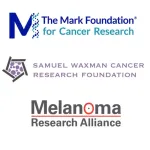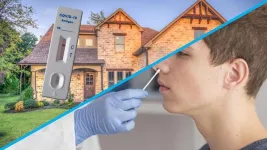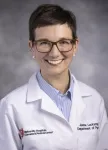(Press-News.org) Philadelphia, February 13, 2024 – Identification of specific gene fusions is critical for the successful targeted treatment of pediatric cancer patients. Researchers at Children’s Hospital Los Angeles have developed a novel assay that automatically integrates the data from multiple fusion identification tools (callers) and efficiently and accurately identifies clinically relevant gene fusions in pediatric tumors. Their results are reported in The Journal of Molecular Diagnostics, published by Elsevier.
Gene fusions are an important class of driver alterations in cancer that occur when parts of two different genes join. Numerous gene fusions have been identified across different types of cancer, especially in pediatric malignant cancers. For example, the PAX3-FOXO1 fusion gene is found in alveolar rhabdomyosarcoma but not in embryonal rhabdomyosarcoma. Targeted testing for gene fusions of interest at the DNA or RNA level is currently in clinical use as it has diagnostic, prognostic, and therapeutic significance.
Lead investigator Jonathan Buckley, MD, Center for Personalized Medicine, Department of Pathology and Laboratory Medicine, Children’s Hospital Los Angeles; and Keck School of Medicine of USC, explains: “Accurate identification of gene fusions in pediatric tumors is critical for establishing a diagnosis and determining optimal treatment. Unfortunately, the leading software packages for calling fusions, based on genomic analysis of tumor tissue, yield many false positives and/or fusions of no clinical importance, and they differ substantially in the sets of fusions called. Therefore, there is a compelling need for a tool to assist the clinical molecular geneticist to filter and prioritize the fusion calls to maximize efficiency and accuracy.”
Dr. Buckley and his co-investigators developed, tested, and validated a new exome capture–based RNA-sequencing (RNAseq) assay. They used the Twist Bioscience Comprehensive Exome capture kit with RNA from fresh, frozen, or formalin-fixed samples from patients with pediatric hematologic malignancies and solid tumors and a gene fusion detection assay that employs four fusion callers (Arriba, FusionCatcher, STAR-Fusion, and Dragen). The new bioinformatics platform detects fusions, prioritizes them, and custom curates downstream processes for consensus fusion calling with high accuracy and efficiency.
While the four fusion-caller software packages are in wide use, their results typically include a large number of false-positive calls and/or identification of fusions of no clinical value. This presents a significant challenge in clinical reporting, both in terms of efficiency and accuracy.
The investigators were initially surprised to note the differences among the sets of fusions identified by the four callers given identical RNAseq data processes, similar approaches, and the same end goal.
Dr. Buckley noted: “We were pleasantly surprised to determine that integration of data from the four callers, and application of ad hoc ranking methods based on both the genomic data and references sources (related to the reported fusions and their component genes), was highly effective in highlighting the key clinical fusion(s).”
The software proved highly effective in pinpointing known clinically relevant fusions, ranking them first in 47 of 50 (94%) samples.
To highlight the usefulness of the new assay and to show the importance of a genome-wide and nontargeted method for fusion detection in pediatric cancer, the researchers present findings from three diagnostically challenging cases. The existing OncoKids DNA and RNA-based next-generation sequencing (NGS) assay used at the center did not identify driver gene fusions in these patients. However, the new method found disease-related gene fusions that were then confirmed by other established sequencing tests.
Dr. Buckley noted, “The full spectrum of gene fusions that function as drivers of tumorigenesis in pediatric tumors is still unknown. One gene can fuse with one or even hundreds of partner genes with the same net biologic effect. A genome-wide approach is therefore necessary when the expected or common gene fusions are not identified by routine methodologies.”
Senior author Jaclyn A. Biegel, PhD, Center for Personalized Medicine, Department of Pathology and Laboratory Medicine, Children’s Hospital Los Angeles; and Keck School of Medicine of USC, concluded, “Our studies demonstrate that the combination of an exome capture–based approach for RNAseq and a bioinformatics platform to streamline the analysis is both robust and efficient to accurately identify pathogenic gene fusions in bone marrow samples as well as fresh, frozen, and formalin fixed tissue specimens from pediatric cancer patients. Although we validated this for clinical use for childhood tumors, these approaches can easily be extended to adult patients with hematologic malignancies and solid tumors.”
END
New assay identifies clinically relevant gene fusions in pediatric tumors more accurately and efficiently
Researchers at Children’s Hospital Los Angeles report in The Journal of Molecular Diagnostics about a new tool that effectively integrates data from four fusion callers and identifies disease-related gene fusions
2024-02-13
ELSE PRESS RELEASES FROM THIS DATE:
Pediatric sickle cell disease team uses pain screening to improve care
2024-02-13
CLEVELAND -- A recent study from researchers at University Hospitals (UH) Connor Whole Health and UH Rainbow Babies & Children’s Hospital describes a quality improvement project where pain screening procedures were embedded within an outpatient pediatric sickle cell disease (SCD) clinic. The study examined (1) the feasibility of routine pain screening, (2) the prevalence of various clinical pain presentations, and (3) what integrative health and medicine modalities were preferred by youth aged 8 to 18 with SCD.
The study, entitled “Pain Screening in Youth with Sickle Cell Disease: A Quality Improvement ...
Grantees selected for The Mark Foundation for Cancer Research and the Samuel Waxman Cancer Research Foundation Aging and Cancer Initiative
2024-02-13
New York, NY – February 13, 2024 – The Mark Foundation for Cancer Research and the Samuel Waxman Cancer Research Foundation (SWCRF) have selected six investigators to receive three grants for their collaborative, two-year program aimed at improving our understanding of the links between aging and cancer. With additional support from the Melanoma Research Alliance (MRA), $1.5 million will fund three innovative projects, each pairing one lab focused on aging with another working on cancer research.
Aging is a major risk factor for developing and dying of cancer. In fact, 90 percent of cancer diagnoses and deaths occur in people ...
Benefits of heat pumps detailed in new NREL report
2024-02-13
Millions of U.S. households would benefit from heat pumps, but the cost of installing the technology needs to come down to make their use a more attractive proposition, according to researchers at the U.S. Department of Energy’s National Renewable Energy Laboratory (NREL).
The findings, detailed in the journal Joule, quantify the costs and benefits of air-source heat pumps across the United States and consider various climates, heating sources, and types of homes. The researchers based their conclusions on simulations of 550,000 statistically ...
School Of Public Health team receives funding for mobile app to prevent dementia In Asian Americans
2024-02-13
By Ann Kellett, Texas A&M University School of Public Health
A research team led by Junhyoung “Paul” Kim, Ph.D., an associate professor of health behavior in the School of Public Health at Texas A&M University, has been awarded a two-year grant from a Korean foundation to design mobile technology to help older Chinese American and Korean American adults in the United States prevent dementia.
The project is in line with the National Institute on Aging’s priority on increasing participation by Asian Americans in dementia care. This cohort is the nation’s ...
Road features that predict crash sites identified in new machine-learning model
2024-02-13
AMHERST, Mass. – Issues such as abrupt changes in speed limits and incomplete lane markings are among the most influential factors that can predict road crashes, finds new research by University of Massachusetts Amherst engineers. The study then used machine learning to predict which roads may be the most dangerous based on these features.
Published in the journal Transportation Research Record, the study was a collaboration between UMass Amherst civil and environmental engineers Jimi Oke, assistant ...
Johns Hopkins Medicine-led study shows rapid COVID-19 tests done at home are reliable
2024-02-13
In a study involving nearly 1,000 patients seen at the Baltimore Convention Center Field Hospital (BCCFH) during a five-month period in 2022 — researchers at Johns Hopkins Medicine, the University of Maryland School of Medicine and five other collaborators report that a rapid antigen test (RAT) for detecting SARS-CoV-2, the virus that causes COVID-19, can be used at home with accuracy comparable to the same test being administered by a health care professional.
The study was first posted online Feb. 13, 2024, in the American Society ...
Researchers learn how nectar-laden honey bees avoid overheating
2024-02-13
Honey bees carrying nectar have the remarkable ability to adjust their flight behavior to avoid overheating when air temperatures increase, according to research led by a University of Wyoming scientist.
Jordan Glass, a postdoctoral research associate in UW’s Department of Zoology and Physiology, conducted the study to determine how high air temperatures may limit the ability of honey bees to forage for nectar. His research findings appear in Proceedings of the National Academy of Sciences, one of the world’s most prestigious multidisciplinary scientific journals covering the biological, physical ...
Dr. Jeanne Lackamp to lead university hospitals’ behavioral health efforts
2024-02-13
CLEVELAND – Jeanne Lackamp, MD, DFAPA, FACLP, has been selected to serve as Chair of Department of Psychiatry, Psychiatrist in Chief for University Hospitals (UH), and Director of the UH Behavioral Health Institute.
The need for behavioral health services continues to increase locally and across the country. The population is still struggling with the effects of the pandemic, while more people report a sense of isolation and depression. An unprecedented number of Americans are dying from drug overdoses. From popular media to medical literature, calls to address behavioral health needs are on the rise.
“Behavioral health is health. It’s ...
Statewide cardiovascular consortium, hosted at Michigan Medicine, receives national award for patient safety, quality efforts
2024-02-13
ANN ARBOR, MI – A collaborative partnership dedicated to improving statewide cardiovascular care and outcomes — hosted at Michigan Medicine — received national recognition for efforts in patient safety and quality Tuesday.
The Blue Cross Blue Shield of Michigan Cardiovascular Consortium, also known as BMC2, earned the 2023 John M. Eisenberg Patient Safety and Quality Award in the local level innovation category. The honor is presented annually by The Joint Commission and the National Quality Forum (NQF).
BMC2 received the award for its significant improvements in the documentation of radiation use, a decrease in high-dose radiation ...
A new way to let AI chatbots converse all day without crashing
2024-02-13
When a human-AI conversation involves many rounds of continuous dialogue, the powerful large language machine-learning models that drive chatbots like ChatGPT sometimes start to collapse, causing the bots’ performance to rapidly deteriorate.
A team of researchers from MIT and elsewhere has pinpointed a surprising cause of this problem and developed a simple solution that enables a chatbot to maintain a nonstop conversation without crashing or slowing down.
Their method involves a tweak to the key-value cache (which is like a conversation memory) at the core of many large language models. In some methods, when this cache needs to hold ...
LAST 30 PRESS RELEASES:
SIMJ announces global collaborative book project in commemoration of its 75th anniversary
Air pollution exposure and birth weight
Obstructive sleep apnea risk and mental health conditions among older adults
How talking slows eye movements behind the wheel
The Ceramic Society of Japan’s Oxoate Ceramics Research Association launches new international book project
Heart-brain connection: international study reveals the role of the vagus nerve in keeping the heart young
Researchers identify Rb1 as a predictive biomarker for a new therapeutic strategy in some breast cancers
Survey reveals ethical gaps slowing AI adoption in pediatric surgery
Stimulant ADHD medications work differently than thought
AI overestimates how smart people are, according to HSE economists
HSE researchers create genome-wide map of quadruplexes
Scientists boost cell "powerhouses" to burn more calories
Automatic label checking: The missing step in making reliable medical AI
Low daily alcohol intake linked to 50% heightened mouth cancer risk in India
American Meteorological Society announces Rick Spinrad as 2026 President-Elect
Biomass-based carbon capture spotlighted in newly released global climate webinar recording
Illuminating invisible nano pollutants: advanced bioimaging tracks the full journey of emerging nanoscale contaminants in living systems
How does age affect recovery from spinal cord injury?
Novel AI tool offers prognosis for patients with head and neck cancer
Fathers’ microplastic exposure tied to their children’s metabolic problems
Research validates laboratory model for studying high-grade serous ovarian cancer
SIR 2026 delivers transformative breakthroughs in minimally invasive medicine to improve patient care
Stem Cell Reports most downloaded papers of 2025 highlight the breadth and impact of stem cell research
Oxford-led study estimates NHS spends around 3% of its primary and secondary care budget on the health impacts of heat and cold in England
A researcher’s long quest leads to a smart composite breakthrough
Urban wild bees act as “microbial sensors” of city health.
New study finds where you live affects recovery after a hip fracture
Forecasting the impact of fully automated vehicle adoption on US road traffic injuries
Alcohol-related hospitalizations from 2016 to 2022
Semaglutide and hospitalizations in patients with obesity and established cardiovascular disease
[Press-News.org] New assay identifies clinically relevant gene fusions in pediatric tumors more accurately and efficientlyResearchers at Children’s Hospital Los Angeles report in The Journal of Molecular Diagnostics about a new tool that effectively integrates data from four fusion callers and identifies disease-related gene fusions




